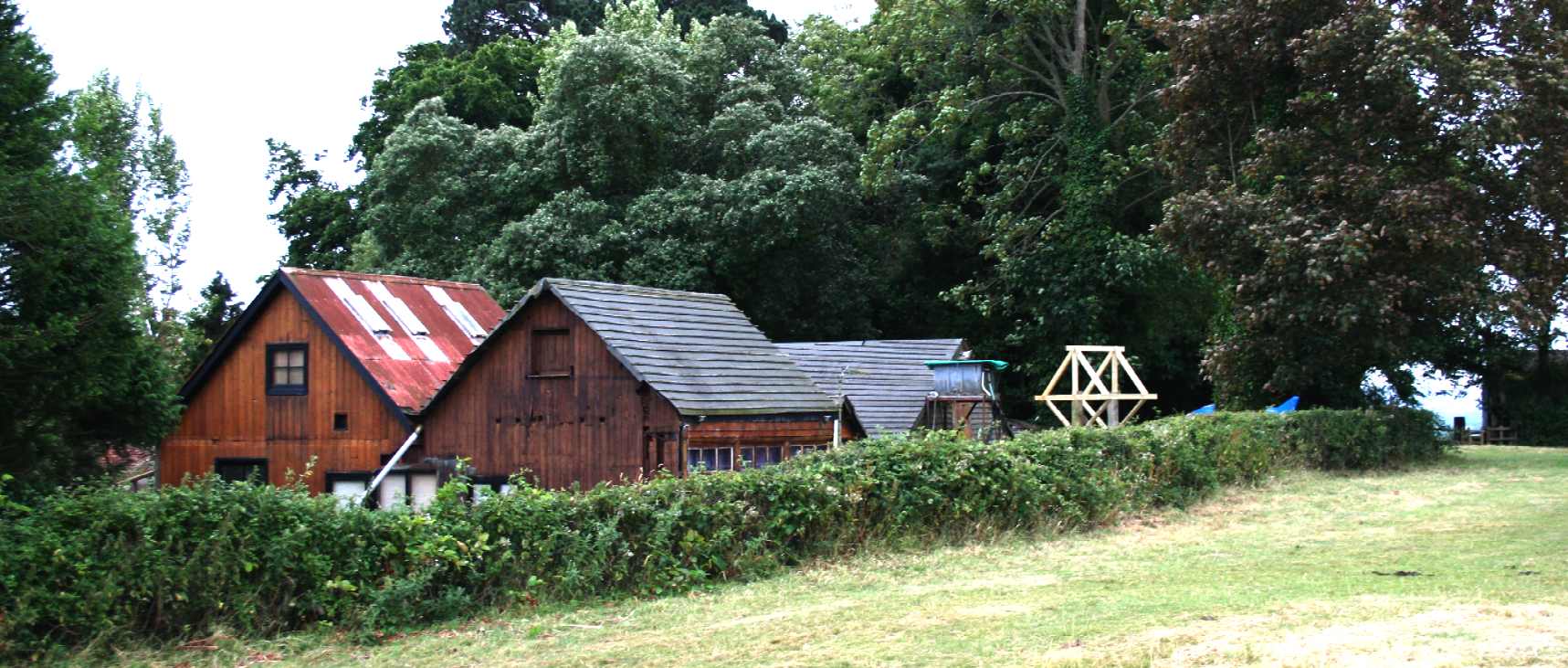|
PLACE OF WORSHIP COUNTRY MULTI-FAITH CHURCH
|
|
|
TIMBER PLACE OF WORSHIP - In Ancient Egypt worshipping the sun was an everyday occurrence. Today we take energy for granted, but why not make your energy collector look a bit more pleasing to the eye and at the same time improve on the harvest. In sustainability terms, even small solar temples help reduce climate change and add to the rural scene.
THE
JOYS OF AN OPEN AIR RETREAT If you are a naturalist or conservationist, you may not wish to communicate with your maker or otherwise worship in the confines of a closed building.
What could be more natural than a place in the country where your senses are in tune with the smells and sights of the Sussex countryside. Our chapel is made of natural wood, where you can see the sun that gives us life during the day and wonder at the stars and moon at night. Part of the prayer area is built in and around trees and bay leaf shrubs, to enhance the feeling of being at one with nature. Not being a building with walls or a roof means that no planning consent is required, where such buildings would be exempt from building regulations.
The area is extremely relaxing and restful. We would recommend that if you have a space that is awkward and wasted, that you feature your living area up and at the same time create a space to meditate, or just wonder at mother nature.
A
LARGE STONE PILLAR CHAPEL - The Parthenon, Athens, is more
than likely the Greek equivalent of a listed building or
heritage site. The Parthenon is a temple of the Doric order with eight columns at the façade, and seventeen columns at the flanks, conforming to the established ratio of 9:4. This ratio governed the vertical and horizontal proportions of the temple as well as many other relationships of the building like the spacing between the columns and their height.
MONUMENT AT RISK - The main generating buildings when in need a new roof and other repairs. The felt roof was a temporary measure to prevent water ingress, where privately owned historic buildings are not considered to be important enough to warrant help from the Heritage Lottery Fund or Historic England. A third range of the twin gabled building is missing where it is taken down to remove the large gas engine inside, but not returned to the original layout because of World War Two. Planning permission is not required to re-instate as this would constitute a repair, but in any event Permitted Development rights allow up to a 50% percent increase in area if the height of the original building is not exceeded. The Trust is considering full reinstatement, subject to building regulations being waived to enable an authentic reconstruction.
LINKS
https://historicengland.org.uk/ http://www.english-heritage.org.uk/ http://www.sussexmuseums.co.uk/ http://www.thekeep.info/
HOUSE
OF GOD - A place of worship is a specially designed structure or consecrated space where individuals or a group of people such as a congregation come to perform acts of devotion, veneration, or religious study. A building constructed or used for this purpose is sometimes called a house of worship. Temples, churches, synagogues and mosques are examples of structures created for worship. A monastery, particularly for Buddhists, may serve both to house those belonging to religious orders and as a place of worship for visitors. Natural or topographical features may also serve as places of worship, and are considered holy or sacrosanct in some religions; the rituals associated with the Ganges river are an example in Hinduism.
THE RURAL SCENE
Funding for essential repairs is not available from the Heritage Lottery Fund for privately owned buildings - no matter how important they may be if they are located in the countryside. That same rules apply to grants from Historic England.
If you own a historic building in the country - you are on your own. Be careful not to get listed or you will be required to comply with reams of regulations and unable to effect repairs without serious legal and planning costs attaching.
HERITAGE INDEX A - Z
CAMPBELL HALL - BLUEBIRD ELECTRIC CARS - BE1 - BE2 - BE3 - BE4 GAS ENGINES - COAL CONVERSION, INTERNAL COMBUSTION OBSERVATORY - HERSTMONCEUX CASTLE SOLAR LADY - STATUE
WOODEN
ARCHITECTURE - When most people think of British churches, the iconic dome of St. Paul’s Cathedral or the soaring arches of Westminster Abbey probably come to
mind and giant stone structures that are cold and damp. But that’s not the only sort of sacred architecture that’s worth
seeing with hundreds of wooden places of worship the world
over..
|
|
|
This website is Copyright © 2023. All rights reserved. All other trademarks are hereby acknowledged. Contact Us www.cherrymortgages.com |






